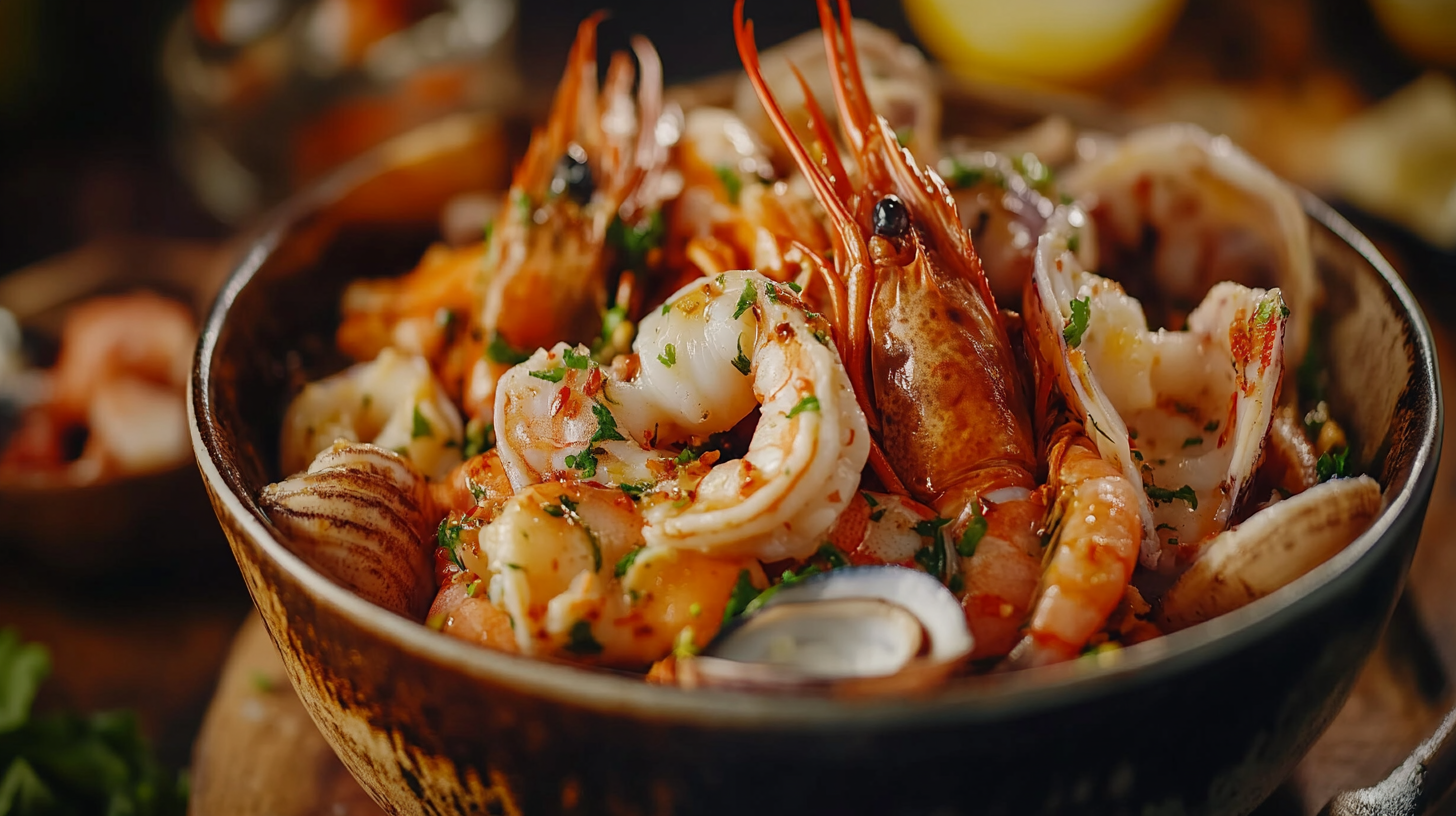In the culinary world, the “Frozen Seafood Mix” has become a staple ingredient for chefs and home cooks alike, thanks to its convenience and versatility. This delightful medley of seafood offers an array of flavors and textures, making it an excellent choice for various dishes, from hearty stews to elegant pasta plates. As consumers increasingly seek nutritious and sustainable meal options, frozen seafood mixes cater to these demands by providing quality seafood that is both accessible and affordable. However, not all frozen seafood mixes are created equal, and choosing the right varieties can significantly enhance your menu. In this blog, we will explore the unique qualities of frozen seafood mixes, highlighting their benefits, and guiding you on how to select the perfect mix that aligns with your culinary vision. Join us as we dive into the world of frozen seafood, unlocking its potential to elevate your dishes.

The frozen seafood mix segment is becoming increasingly vital in the global seafood industry, projected to grow at a compound annual growth rate (CAGR) of 3.1%, reaching approximately USD 149,594.6 million by 2034. This growth mirrors broader industry trends where convenience and a diverse offering drive consumer preferences. As restaurants and food services seek to enhance their menus with unique and varied seafood options, the adoption of frozen seafood mixes proves to be a practical solution. These products not only enhance culinary creativity but also streamline operations, allowing establishments to maintain quality while managing costs effectively.
In recent years, shifts in consumer behavior towards healthier eating and sustainability have buoyed the market for frozen seafood. As consumers become more health-conscious, they increasingly turn to seafood for its nutritional benefits. The rise of cold chain logistics has further facilitated this trend, ensuring that products maintain their freshness from production to the end consumer. It is essential for operators in the food industry to recognize these dynamics and adapt their menu offerings accordingly, positioning frozen seafood mixes as both a profitable and appealing option. By understanding market trends and consumer preferences, restaurants can effectively leverage this growing segment to enhance their overall food offerings.
Frozen seafood offers unique nutritional benefits that can set it apart from fresh options. One of the main advantages is the preservation of essential nutrients. When seafood is frozen shortly after being caught, it locks in vitamins, minerals, and omega-3 fatty acids. This rapid freezing process helps to maintain the quality and nutritional value, often making frozen varieties just as healthy, if not healthier, than their fresh counterparts. For instance, fish like salmon and mackerel retain their rich sources of omega-3, which are crucial for heart health and cognitive function.
Moreover, frozen seafood can be more convenient and versatile. It allows for greater flexibility in meal planning since it has a longer shelf life compared to fresh seafood that must be consumed quickly. Cooked frozen seafood can contribute to a balanced diet with less food waste. Consumers can choose from a variety of frozen seafood mixes that combine different types, providing a spectrum of flavors and textures. This diversity not only enhances the culinary experience but also ensures various nutritional profiles in a single dish, making it easier for businesses to cater to diverse dietary needs while maintaining quality and taste.
When selecting the best frozen seafood mix for your menu, several factors come into play to ensure culinary success. According to industry reports, the global frozen seafood market is projected to reach approximately $46 billion by 2027, highlighting an increasing consumer demand for convenient yet quality seafood options. One crucial consideration is the variety of seafood included in the mix. A well-rounded frozen seafood assortment typically features a balance of species, including shrimp, scallops, and various fish, providing chefs with flexibility and a range of flavors for their dishes.
Another important aspect to consider is sourcing and sustainability. Chefs and restaurant owners should look for products that are certified by reliable sustainability programs, as consumers are increasingly concerned about the environmental impact of their food choices. Reports indicate that over 70% of consumers prefer seafood that is sustainably sourced, which can enhance the restaurant's appeal and build a loyal customer base. Additionally, understanding the freezing process is essential; flash-freezing seafood at peak freshness helps retain its nutritional value and flavor, making it a superior choice for high-quality culinary applications.

When it comes to creating diverse and appealing menus, frozen seafood mixes offer a culinary versatility that is hard to beat. Popular varieties such as shrimp, squid, and scallops not only provide a range of textures but also boast distinct flavor profiles. According to the National Oceanic and Atmospheric Administration (NOAA), shrimp is the most consumed seafood in the United States, appreciated for its mild flavor and adaptability in numerous dishes, from stir-fries to soups.
Another popular option is calamari, which delivers a slightly sweet and briny essence. The IQF (individually quick frozen) process preserves these seafood items at peak freshness, ensuring that the unique flavor is retained. A report from the Seafood Source indicates that the global frozen seafood market is expected to reach $40 billion by 2027, reflecting the increasing popularity and consumer demand for frozen seafood products, including these mixes.
Incorporating a variety of frozen seafood in your menu can also cater to different cooking methods. For instance, while shrimp lends itself well to sautéing or grilling, squid can be perfectly marinated and either fried or grilled depending on the desired texture. Understanding these flavor profiles and cooking uses is key for chefs aiming to elevate their dishes and capitalize on the growing seafood trend.

When it comes to seafood, sustainability is not just a trend; it's a necessity for both the environment and consumers. The increasing demand for eco-friendly frozen seafood products underscores the importance of sustainable sourcing practices. As the sustainable seafood market is projected to grow from USD 18.6 billion in 2024 to approximately USD 35.6 billion by 2034, businesses must prioritize environmentally responsible options in their menus. Consumers are becoming more discerning, seeking out products that not only satisfy their cravings but also align with their values.
The surge in popularity of frozen seafood, particularly frozen smoked salmon, reflects a broader shift towards convenient and healthy protein sources. As the market for frozen seafood is expected to reach around USD 107.4 billion by 2034, including frozen options that are sourced responsibly will be essential for meeting customer expectations. Retailers and food service providers are encouraged to partner with suppliers committed to sustainable practices, ensuring that each offering not only tastes great but also supports the health of our oceans and ecosystems. Mindful consumerism is on the rise, and embracing sustainable seafood can set a brand apart in a competitive landscape.
| Seafood Type | Flavor Profile | Sustainability Rating | Best Cooking Method | Pairing Suggestions |
|---|---|---|---|---|
| Shrimp | Sweet and Tender | A | Grilled or Stir-Fried | Garlic, Lemon, Asparagus |
| Calamari | Mild and Slightly Chewy | B | Fried or Grilled | Tomato Salsa, Lemon Aioli |
| Mussels | Briny and Sweet | A | Steamed or Baked | Garlic Butter, Herb Sauce |
| Fish Fillets | Delicate and Flaky | A | Baked or Pan-Fried | Lemon, Dill, Couscous |
| Scallops | Buttery and Sweet | B | Seared or Grilled | Pasta, Peas, Lemon Butter |
